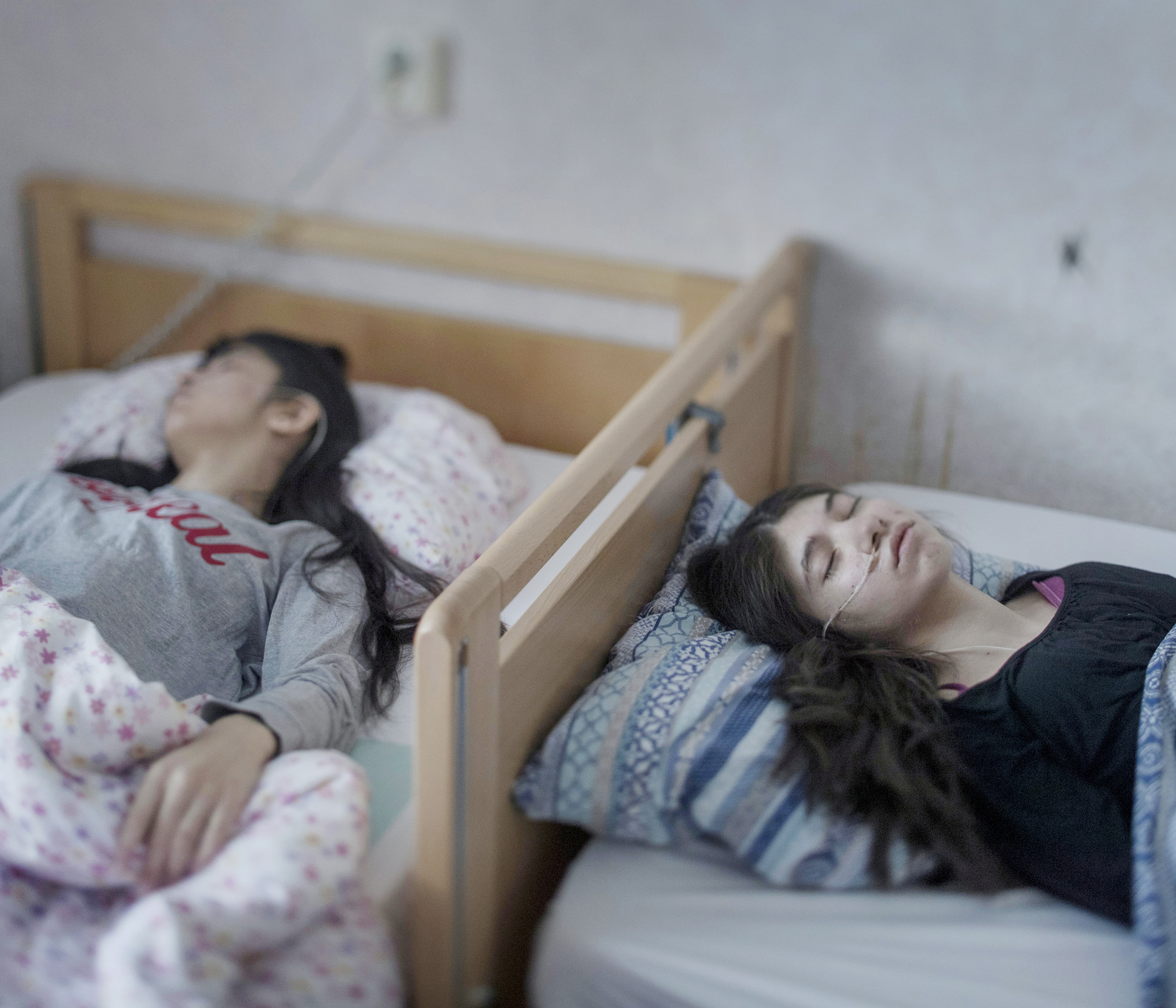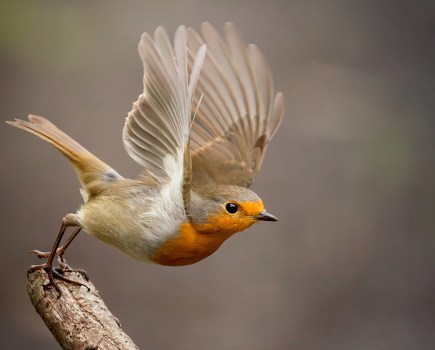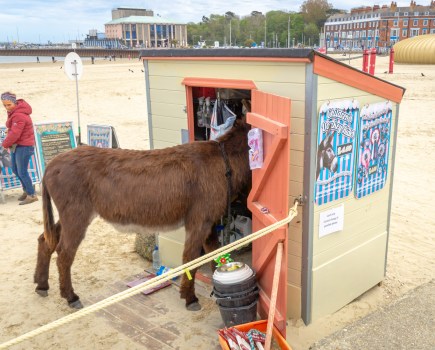
Nigerian migrants cry and embrace in a detention centre for refugees and migrants in Surman, Libya, in August 2016. Hundreds of women are here, in precarious conditions – the majority of them tried to get to Europe by taking smugglers’ boats over the Mediterranean. Photographer Daniel Etter won third prize in the Contemporary Issues Singles category of the 2017 WPPh Contest with this image, The Libyan Migrant Trap. Taken on a Canon EOS 5D Mark III with a Canon EF 24-70mm f/4L IS USM lens. © Daniel Etter
For famous photojournalist Sir Don McCullin, the landscape has changed irreconcilably since the days when dozens of printed pages were dedicated to his photo stories, leading him to declare: “Photojournalism is dying. Young people are being encouraged to go into photojournalism and there’s no outlet for it – newspapers and magazines are much more interested in the wealthy, the glamorous and celebrities. They don’t want suffering people in their newspapers. It doesn’t make money for proprietors. Photojournalism hasn’t lost its way but it’s been conveniently pushed aside.”
We spoke to photojournalists and influencers working across the industry about the state of affairs today, and asked their opinions about the future of photojournalism in the digital age.

A boy, born in South Africa after the end of apartheid in 1994, has found that racism isn’t easy to erase in the country. From photographer Ilvy Njiokiktjien’s series Afrikaner Blood – another photo from which won second prize in the Contemporary Issues Singles category of the 2012 WPPh Contest. Taken on a Canon EOS 5D Mark II with a 40mm lens. © Ilvy Njiokiktjien
Ilvy Njiokiktjien
“Assignments have changed, so people are not necessarily going to send you somewhere for months to work on one project. In general, if you want to work on long-term projects, you have to invest money yourself as well.”
“I don’t think a single image will ever lose its power – I can look at a single image and never forget it.”
“When Don McCullin’s pictures were making it into the newspaper, his images would be the news. Now if I take a picture at Nelson Mandela’s funeral, for instance, there are 300 other photographers there. There are so many images that you are never going to really shoot an iconic image. That’s changed a lot. You’re not the only one there – there are your colleagues, and there are people with phones.
“I don’t think a single image will ever lose its power. Single images, to me, are so strong – I can look at a single image and never forget it. But there are new ways of storytelling – with phones, with interactive online experiences and virtual reality – so it’s important to see what matches the story.”
About Ilvy Njiokiktjien
Canon Ambassador Ilvy is an independent Dutch news and documentary photographer who has covered current affairs and social issues around the world for NGOs and major global publishers. She has won a Canon AFJ Award, and a World Press Photo Multimedia Award.
Jérôme Sessini
“I think now we are freer than before. Firstly because of technology and, secondly, because the young photographers and myself, we don’t care about the newspapers like people did before. We got free from the newspapers, so we are able to tell stories in the way we want to tell them.
“One of the dangers is that now photographers are targets in conflict. And I feel that if I fear, I cannot do my job properly.”
“We are freer than before – we are able to tell stories in the way we want to tell them.”
“I totally believe in the stories – I’m always thinking, ‘tell a story’, not get one single picture. I don’t try to give explanations with photography because it can’t tell you everything. It can translate emotions – I believe more in emotions than in rationality. I don’t want to tell them, ‘this is like this’, or ‘like that’. I want them to first feel something, and then hopefully they will ask some questions. They will have to find the answers by themselves.”
About Jérôme Sessini
Canon Ambassador Jérôme Sessini has covered some of the most significant news stories of the past 20 years, filing images from conflict zones such as Kosovo, Syria and the Ukraine.

Uppgivenhetssyndrom, or resignation syndrome, is said to exist only in Sweden, and only among refugees. The patients seem to have lost the will to live. Djeneta has been bedridden and unresponsive for two and a half years and her sister Ibadeta for more than six months. Magnus Wennman’s image is nominated for an award in the People Singles category of the WPPh 2018 contest. Taken on a Canon EOS-1D X Mark II with a Canon TS-E 45mm f/2.8 tilt-shift lens. © Magnus Wennman
Magnus Wennman
“When I started, press photography was a pretty old-school profession, but today it’s completely different. It’s not about the technique any more, it’s about telling stories, and you have endless opportunities to tell stories today. If you’re a photographer who used to just sit at the newspaper office and wait for jobs to fall into your lap, that’s dying. But if you work with storytelling, I would say the future is very bright.
“Because there are not that many staff jobs any more, photojournalism is more democratic – everybody can do it, not only people who work at newspapers.”
“Visual storytelling is getting more and more important – if you’re good at that, you’re going to survive.”
“Today you also have the possibility to choose if you want to do a visual story, a video, sound, or if you want to write the story. The new generation of photojournalists will work in a completely different way to the old photojournalists. They know the possibilities of working with social media and are not locked into only stills photography. As you see everywhere, visual storytelling is getting more and more important – if you’re good at that, you’re going to survive.”
About Magnus Wennman
Canon Ambassador Magnus Wennman has been a photojournalist since the age of 17, when he started work at a local Swedish newspaper.
Now a staff photographer for Scandinavia’s biggest daily paper, Aftonbladet, he has won four World Press Photo awards.
Tom Jenkins
“Photojournalism is not breathing very well at the moment, I would have to say. Technology and the digital age have been like a seismic shock for photojournalism; everyone’s got a phone; everyone’s taking pictures; everyone sees themselves as a photographer now. This has made a massive difference to photojournalism.”
“Technology has been like a seismic shock – everyone sees themselves as a photographer now.”
“Because the markets are now absolutely flooded with images, prices have come right down, so the amount that you get paid for an image online now is tiny. Newspapers can access photographs from so many different areas now that it’s really affected the way they employ and use photographers – there are fewer staff photographers, and the amount that photographers are getting paid is going down, especially in editorial ph otography and sports photography.
“To make a worthwhile living out of it, you’ve got to think of different ways of financing yourself, so you might do some commercial work to enable you to go off to photograph the refugee crisis for a month or so.”
About Tom Jenkins
Canon Ambassador Tom Jenkins travels the world covering sports events for UK newspapers The Guardian and Observer. He is a lauded lensman, well known for shooting engaging stories around the field as well as the action itself.
Daniel Etter
“Photojournalism has been declared dead for quite a while and, somehow, it’s still around. It’s still alive, and it’s still kicking – maybe not quite as hard as in Don McCullin’s days, but it’s still important. It doesn’t have the impact it once did, and it will never have that impact again. That’s because it’s been, if not replaced, then at least augmented by other technologies. I think photography will always play a role but if there are other, better ways of telling visual stories, I’m fine with that.”
“The biggest challenge we are facing is the struggle to be believed.”
“The biggest challenge we are facing is the struggle to be believed. Look at how really basic facts are in question nowadays. To navigate in that environment, and to struggle to be trusted and to be taken as a reliable source of information, is our biggest challenge. I haven’t figured out a way to make news more trustworthy – the only thing we can do is good work. That means doing research, asking the right questions, and trying to represent events in a fair way.”
About Daniel Etter
Canon Ambassador Daniel is a photographer, feature writer and filmmaker. His work has explored social inequality, with a particular focus on child labour, as well as migration and refugee issues along Europe’s external borders and conflict zones across the Middle East.
Written by Lucy Fulford
Photojournalists’ kitbag
The key kit that the pros use to take their photographs
Camera
Canon EOS 5D Mark IV
This full-frame 30.4MP DSLR captures incredible detail, even in extreme contrast. Continuous 7fps shooting helps when chasing the perfect moment, while 4K video delivers high-definition footage.
https://www.canon-europe.com/cameras/eos-5d-mark-iv/
Lens
Canon EF 50mm f/1.2L USM
With its incredible f/1.2 maximum aperture and ultrasonic autofocus, this super-fast lens is a consummate low-light performer.
https://www.canon-europe.com/lenses/ef-50mm-f-1-2l-usm-lens/
Canon EF 24-70mm f/2.8L II USM
This professional-quality standard zoom lens offers outstanding image sharpness and a robust L-series build. Its constant f/2.8 aperture enables you to take superb photos even in low light, and to control depth of field with ease.
See the video, and read more about the future of photojournalism at www.canon-europe.com/pro/stories/future-of-photojournalism








